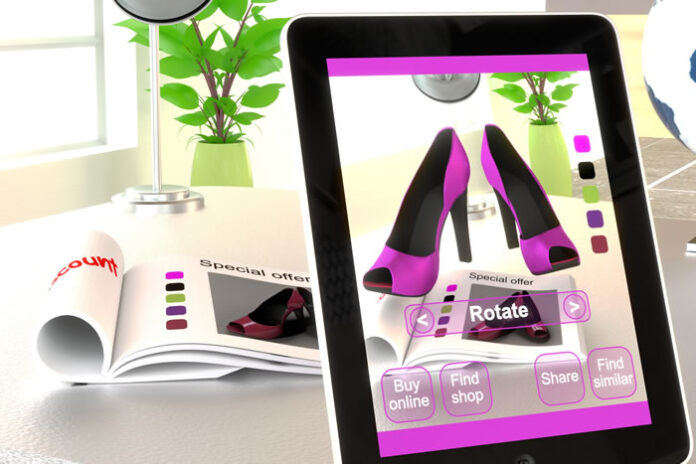After the past 18 months, augmented reality is quickly graduating from novelty experience to mainstream expectation. Immersive shopping experiences that were once groundbreaking—such as virtual try-ons—now seem like a given to many consumers. Here is why brands should embrace AR marketing.
But while the technology’s newness may be wearing off, its potential only continues to climb–particularly for marketers. As 5G picks up steam, brands will be able to use AR in even more places. So, it’s no surprise AR advertising is predicted to grow from $1.41 billion this year to over $8 billion by 2024, according to ARtillery Intelligence.
For businesses that are still watching from the sidelines, here’s why AR can offer game-changing opportunities across marketing strategies.
1. Immersive Experiences Keep Consumers Coming Back for More
Consumers’ appetite for AR-powered digital shopping experiences is ever expanding. According to BRP Consulting, nearly half of consumers say they’re more likely to shop at a retailer that uses AR and 32% of retailers plan to use the technology and virtual reality within three years.
During the pandemic, AR provided convenience and a stand-in for in-store experiences. But its power for driving marketing outcomes is even greater: Brands can capture in-demand consumer attention and build long-lasting loyalty by finding new ways to fuel one-of-a-kind experiences with AR.
For example, National Geographic’s collaboration with NASA, which offers users a first-of-its kind, 360-degree panoramic view of Mars, hints at the road ahead. By sharing virtual experiences people can’t access anywhere else, brands across verticals can stay top-of-mind for consumers regardless of whether they shop at home or in stores.
2. Virtual Try-Ons Encourage People to Go from Browsing to Buying
With endless options for any item they’re looking for, consumers can struggle before taking the plunge with a purchase. But AR can help shoppers move past analysis paralysis by giving them the assurance they need.
Take Sephora’s Virtual Artist tool, which beauty enthusiasts have used to try on more than 200 million makeup shades since launch. This hassle-free way of comparison shopping keeps consumers returning to the company’s app and also gives them the confidence they need to click “add to cart.”
MAC Cosmetics is another beauty brand diving into AR. With its dynamic shopping lenses on Snapchat, the company became the first in cosmetic giant Estée Lauder’s lineup to launch AR on the platform. These lenses enable people to purchase MAC Cosmetics’ products directly from the app after virtual try-ons—illustrating how brands can use AR to provide more seamless shopping experiences.
3. AR Features Set the Stage for Long-Term Growth
As retail businesses prepare to enter a new normal, investing in AR can help accelerate performance and anticipate future consumer trends. Our own data shows that enabling customers to view realistic three-dimensional images of a brand’s products on any device increases sales conversion by 150% and decreases returns by 25%.
This demonstrates that while the pandemic may have catalyzed AR advertising, the technology—and consumers’ desires for it—will stick around long past lockdowns. According to Snap Consumer AR Global Report 2021, nearly 3 in 4 consumers say they’re willing to pay more for a product that promises the total transparency that AR can provide.
Embrace AR marketing
The good news for brands? New web-based AR tools have dramatically democratized the technology, making it easier than ever to create and share the kinds of immersive experiences shoppers now expect. The barriers to entry have never been lower and, especially for brands emerging from the dark tunnel of 2020, the timing couldn’t be better.















